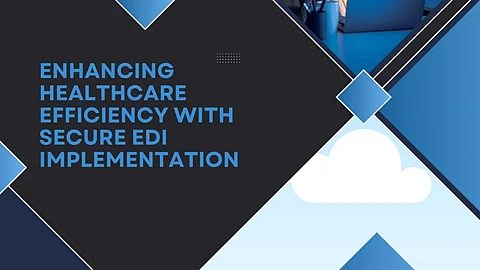

Electronic Data Interchange (EDI) has transformed healthcare information exchange by enhancing transaction efficiency while ensuring strict regulatory compliance. By replacing paper-based processes with secure electronic systems, EDI minimizes errors, reduces administrative costs, and accelerates data processing. Its standardized formats enable seamless communication between healthcare providers, insurers, and stakeholders, improving accuracy and workflow efficiency. Pramod Kumar Muthyala, a healthcare technology expert, examines EDI’s profound impact on security, compliance, and operational effectiveness, highlighting its critical role in modernizing healthcare data management and financial transactions.
EDI technology has changed the face of communication in healthcare by replacing some of the older, some might say archaic, paper transactions with a far more efficient electronic exchange. Cost reductions within administration have burgeoned, fewer processing errors have intervened, and transaction speed has zoomed into the future. The standard formats utilized by EDI allow for straightforward data exchange between healthcare providers, insurers, and other sectors-all promoting accuracy and efficiency in operations. Improved workflow, more compliance, and data integrity, due to all these factors, defy one from questioning the role of EDI in modern health info management.
One of the essential facets of EDI in health care is compliance with the Health Insurance Portability and Accountability Act (HIPAA) provisions. Organizations have stringent measures such as advanced encryption protocols and multi-factor authentication to protect electronic protected health information (ePHI). HIPAA compliance is realized through a combination of administrative, physical, and technical safeguards whose design is to mitigate risks and prevent unauthorized access. These measures will improve data security while ensuring its integrity and confidentiality, thus reducing the risk of data breaches while efficient exchange of information in the health care space continues.
The EDI transaction uses standard formatting in which the X12N 834 transaction is used for enrollment, X12N 837 for healthcare claims, and X12N 835 for payment processing; thus, enabling inter-operability among various healthcare systems. The standards ensure proper and fast data exchange so that any errors can be avoided and integrated into workflows. Claims rejection rates have decreased considerably due to the implementation of automated processing. It has also shortened payment cycles and enhanced financial processes. EDI provides transaction speeding and data enhancement, thus contributing to operational efficiency and better financial health and reliability for healthcare providers and insurers.
Security in EDI systems is of utmost importance and requires adequate measures to protect sensitive healthcare information. Organizations use advanced encryption techniques like AES-256 for securing data at rest and TLS 1.3 for data in transit. Role-based access control serves as an additional security measure, denying access to unauthorized persons while upholding confidentiality and integrity. These security implementations would greatly minimize data breaches and prevent unauthorized access. Health services that have implemented strong security measures consequently provide an additional protection layer for patient data, comply with regulations, and enable secure transmission of vital healthcare information across systems.
Automated validation systems have brought in improvements in transaction accuracy, as they reduce errors associated with manual entry data. Real-time validation checks whether a transaction adheres to preset requirements, leading to lower incidence of claim denials and associated payment differences. Intelligent error-tracking helps organizations experience reduced delays in processing and decline of administrative workload. This has improved efficiency in operations and has allowed error-free data verification, making healthcare transactions robust. As a result, healthcare providers get faster turnaround times, cost-efficient service delivery, improvement in financial management, and better service delivery and operational performance.
EDI solutions play a pivotal role in the revenue cycle management process by expediting claims processing and payment reconciliation. Automation enhances the speed at which claims are approved, thereby reducing accounts receivable days and maximizing cash flow with promises of good efficiency management by healthcare providers. This reduces the administrative burden, allowing healthcare providers to shift their focus to patient care, consequently enhancing their financial stability and service quality in healthcare operations.
Through an MLOps pipeline, data are continuously generated from various transactions to diagnose possible violations. Machine learning algorithms are employed to detect patterns that would confirm adherence to any specific regulation and/or help to mitigate risks. This automates the compliance audit, which makes regulatory reporting easier and reduces the administrative burden on healthcare organizations.
There are expectations about the integration of the aforementioned EDI technology with current technologies such as blockchain and artificial intelligence. Such combinations will increase levels of data security, interoperability, and operation efficiency. Such advanced EDI solutions can help healthcare organizations make their systems future-ready while ensuring a great patient experience.
This will serve to illustrate that EDI is becoming a fundamental part of healthcare today, where there is easy, secure, and compliant data interchange. Standardizing transactions, upgrading security protocols, and automating have brought an immense benefit to operational efficiency and solvency. The further developing of technologies will inspire more innovations in EDI that would better optimize healthcare processes to both providers and patients. These insights from Pramod Kumar Muthyala indicate the significance EDI has for the future of information management and healthcare exchange.
